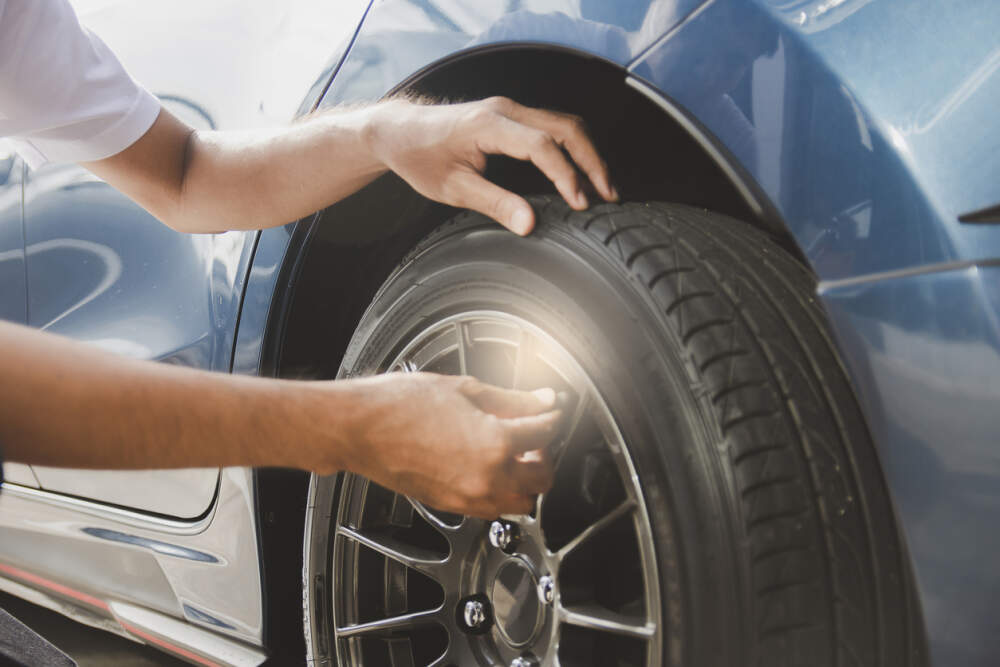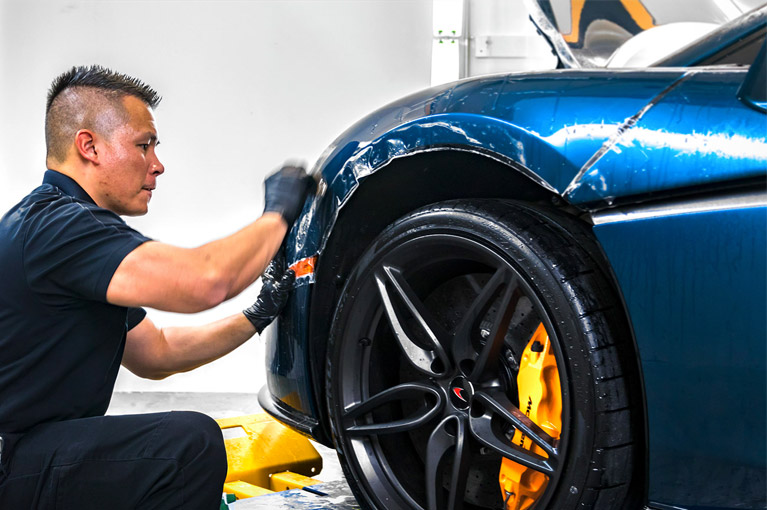
Being a Weekend Warrior means taking charge of tasks that enhance your life, and what better way to do that than by tackling DIY car maintenance projects? Maintaining your vehicle doesn’t have to be daunting or expensive. In this guide by Cash For Cars Sunshine Coast company, we’ll explore several maintenance tasks you can easily tackle over the weekend, saving both time and money.
Oil Change
Tools and Materials Needed:
- Jack stands
- Oil filter wrench
- Oil drain pan
- Fresh oil
- Oil filter
Step-by-Step Guide:
- Lift the car using jack stands.
- Locate the oil drain plug and oil filter.
- Drain the old oil into the drain pan.
- Remove the old oil filter and replace it with a new one.
- Refill the engine with fresh oil.
- Lower the car and check for leaks.
Regular oil changes are crucial for maintaining engine health and longevity.
Tire Rotation
Why Tire Rotation is Necessary:
- Ensures even tire wear
- Improves traction and handling
- Extends tire lifespan
How Often Should You Rotate Your Tires?
Every 6,000 to 8,000 miles or as recommended by the manufacturer.
Step-by-Step Tire Rotation Process:
- Loosen the lug nuts.
- Lift the car using a jack.
- Remove the tires and rotate them according to the recommended pattern.
- Tighten the lug nuts in a star pattern.
- Lower the car and double-check the lug nut tightness.
Brake Inspection and Pad Replacement
Signs Your Brakes Need Attention:
- Squeaking or grinding noises
- Soft or spongy brake pedal
- Longer stopping distances
Tools Required for Brake Inspection and Pad Replacement:
- Jack and jack stands
- Lug wrench
- C-clamp
- Brake grease
Step-by-Step Guide:
- Lift the car and remove the wheels.
- Inspect the brake pads for wear.
- Replace worn brake pads.
- Grease the caliper pins.
- Reassemble the brakes and wheels.
Air Filter Replacement
Importance of a Clean Air Filter:
- Improves engine performance
- Enhances fuel efficiency
- Protects the engine from dirt and debris
How to Check and Replace the Air Filter:
- Locate the air filter housing.
- Remove the old air filter.
- Insert the new air filter.
- Secure the air filter housing.
Regular air filter maintenance ensures optimal engine performance.
Battery Maintenance
Signs of a Failing Battery:
- Dim headlights
- Difficulty starting the engine
- Corrosion on battery terminals
Cleaning and Checking Battery Connections:
- Disconnect the battery terminals.
- Clean the terminals with a wire brush.
- Reconnect the terminals securely.
Knowing how to jump-start a car can also come in handy during emergencies.
Fluid Check and Top-Up
Importance of Fluid Levels:
- Ensures proper vehicle operation
- Prevents overheating and damage
- Extends component lifespan
Types of Fluids to Check:
- Engine oil
- Transmission fluid
- Brake fluid
- Coolant
Step-by-Step Fluid Check Process:
- Locate the fluid reservoirs.
- Check the fluid levels and condition.
- Top up if necessary with the appropriate fluid.
Regular fluid checks are essential for maintaining vehicle performance and safety.
visit: https://getcashforcarz.com.au/
Headlight and Taillight Replacement
How to Know When to Replace Lights:
- Dim or flickering lights
- Cracks or moisture inside the light housing
Tools Needed for Light Replacement:
- Screwdriver
- Replacement bulbs
Step-by-Step Guide:
- Remove the screws securing the light housing.
- Replace the old bulb with a new one.
- Reassemble the light housing.
Ensuring proper lighting enhances visibility and safety on the road.
Wiper Blade Replacement
Signs of Worn-Out Wiper Blades:
- Streaking or smearing on the windshield
- Squeaking or chattering noises
- Worn or torn rubber
Choosing the Right Wiper Blades:
- Select blades that fit your car’s make and model
- Consider weather conditions in your area
How to Replace Wiper Blades:
- Lift the wiper arm away from the windshield.
- Press the release tab and remove the old blade.
- Attach the new blade securely.
Clear visibility is crucial for safe driving, especially during inclement weather.
Spark Plug Replacement
Importance of Spark Plugs:
- Ignite the air-fuel mixture in the engine
- Maintain engine performance and efficiency
Signs of Faulty Spark Plugs:
- Misfiring engine
- Rough idling
- Decreased fuel efficiency
Step-by-Step Spark Plug Replacement:
- Locate the spark plugs.
- Remove the spark plug wires.
- Unscrew the old spark plugs and replace them with new ones.
- Reattach the spark plug wires securely.
Regular spark plug replacement ensures smooth engine operation.
Coolant Flush
Why Coolant Flush is Important:
- Removes contaminants and debris
- Prevents corrosion and rust
- Maintains optimal engine temperature
Tools Needed for Coolant Flush:
- Drain pan
- Coolant flush kit
- Fresh coolant
Step-by-Step Guide:
- Drain the old coolant from the radiator.
- Use a flush kit to clean the cooling system.
- Refill the radiator with fresh coolant.
Regular coolant flushes help prevent engine overheating and costly repairs.
Engine Belt Inspection and Replacement
Signs of a Worn-Out Engine Belt:
- Cracks or fraying on the belt
- Squealing noises from the engine
- Engine overheating
How to Inspect and Replace Engine Belts:
- Locate the engine belts.
- Check for signs of wear or damage.
- Replace worn-out belts with new ones.
- Adjust belt tension if necessary.
Regular belt maintenance prevents unexpected breakdowns and costly repairs.
Exhaust System Inspection
Signs of Exhaust System Issues:
- Loud noises or rattling
- Visible damage or rust
- Decreased fuel efficiency
How to Inspect the Exhaust System:
- Visually inspect the exhaust system for damage or leaks.
- Check the exhaust hangers and mounts.
- Listen for unusual noises while the engine is running.
A healthy exhaust system is essential for vehicle performance and emissions control.
Cleaning and Detailing
Importance of Regular Cleaning:
- Protects paint and finishes
- Prevents rust and corrosion
- Enhances resale value
Step-by-Step Car Detailing Process:
- Wash the car using a mild detergent and sponge.
- Dry the car thoroughly with a microfiber cloth.
- Wax the exterior to protect the paint.
- Vacuum and clean the interior surfaces.
Regular cleaning and detailing keep your car looking new and well-maintained.
Conclusion
Being a Weekend Warrior isn’t just about tackling DIY projects; it’s about taking ownership of your possessions and ensuring they’re well cared for. By following these simple DIY car maintenance projects, you can save time and money while keeping your vehicle in top condition. Remember, regular maintenance is the key to a long-lasting and reliable car.
visit: https://getcashforcarz.com.au/sell-your-non-runner-car/
FAQs
-
How often should I change my car’s oil?
- It’s generally recommended to change your oil every 5,000 to 7,500 miles, but check your owner’s manual for specific guidelines.
-
Can I rotate my tires at home?
- Yes, tire rotation can be done at home with the right tools and knowledge. Just make sure to follow the recommended rotation pattern.
-
Is it necessary to replace spark plugs regularly?
- Yes, spark plugs should be replaced according to the manufacturer’s recommended intervals to maintain optimal engine performance.
-
What should I do if my car battery dies?
- You can jump-start your car using jumper cables and another vehicle with a charged battery. Alternatively, you can use a portable jump starter.
-
How often should I flush my car’s coolant?
- Coolant flush intervals vary depending on the vehicle and coolant type. Check your owner’s manual for specific recommendations, but it’s typically done every 30,000 to 50,000 miles.








